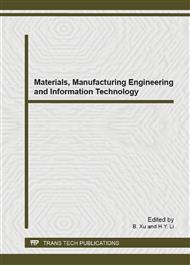[1]
Pan, J. Z: Gravity dam design (Hydraulic and Power Press, Beijing 1987).
Google Scholar
[2]
The Ministry of Water Resources of the PRC. Design specification for concrete gravity dams (SL 319-2005) (2005).
Google Scholar
[3]
Huang, J.T., You, W.M. Improved rigid body limit equilibrium method for analysis of dam foundation stability against deep sliding: Journal of Hydraulic Engineering Vol. 42 (2011), pp.963-969.
Google Scholar
[4]
Yi, X.N., Zhang, G.X. The contact stiffness bounds when DDA is applied to the analysis of the gravity dam stability: Journal of China Institute of Water Resources and Hydropower Research Vol. 10 (2012), pp.294-300.
Google Scholar
[5]
Wang, J.X., Li, Y.M., Li, Z. Plastic limit analysis method for gravity dam: Journal of Hydraulic Engineering Vol. 33(2004), pp.81-84.
Google Scholar
[6]
Ren, Q.W., Jiang, Y.Z. Ultimate bearing capacity of concrete dam involved in geometric and material nonlinearity: Science China Technological Sciences Vol. 54 (2011), pp.509-515.
DOI: 10.1007/s11431-010-4281-0
Google Scholar
[7]
Lin, J.G., Lin, G. Effect of foundation stiffness and anisotropy on the seismic response of concrete dams: Chinese Journal of Geotechnical Engineering Vol. 27 (2005), pp.819-823.
Google Scholar
[8]
Lemaitre, J. How to use damage mechanics: Nuclear Engineering and Design Vol. 80 (1984), pp.233-245.
DOI: 10.1016/0029-5493(84)90169-9
Google Scholar
[9]
Berthelot, J.M., Robert, J.I. Damage evaluation of concrete test specimens related to failure analysis: Journal of Engineering Mechanics Vol. 116(1990), pp.587-640.
DOI: 10.1061/(asce)0733-9399(1990)116:3(587)
Google Scholar
[10]
Mazars, J., Pijaudier-Cabot, G. Continuum damage theory-application to concrete: Journal of Engineering Mechanics Vol. 115 (1987), pp.345-365.
DOI: 10.1061/(asce)0733-9399(1989)115:2(345)
Google Scholar
[11]
Zhao, J.K. Study of concrete and rock elasto-plastic damage mesoscopic failure. Department of Engineering Mechanics, Hohai University, Nanjing (2007).
Google Scholar
[12]
Liang, Z.C. Three-Dimensional failure process analysis of rock and associated numerical tests. Mining Engineering, Northeastern University, Shenyang (2005).
Google Scholar
[13]
Chen, J.P. Study on rock mass unloading relaxation region and its influence on working behavior of arch dam. Department of Engineering Mechanics, Hohai University, Nanjing (2010).
Google Scholar
[14]
Liu, J., Feng, X.T., Ding, X.L. Stability assessment of the There-Gorges Dam foundation, China, using physical and numerical modeling- PartⅡ: numerical modeling: International Journal of Rock Mechanics and Mining Sciences Vol. 40 (2003).
DOI: 10.1016/s1365-1609(03)00056-x
Google Scholar


